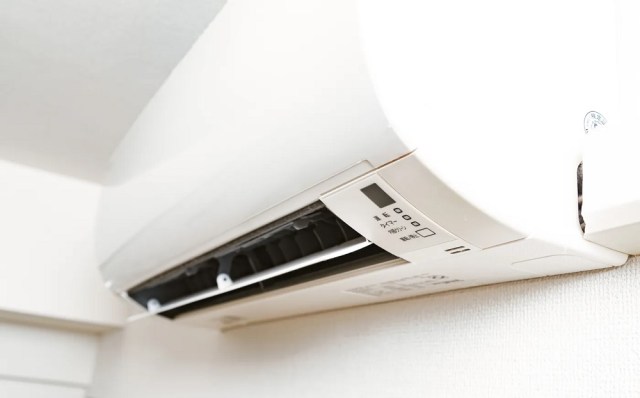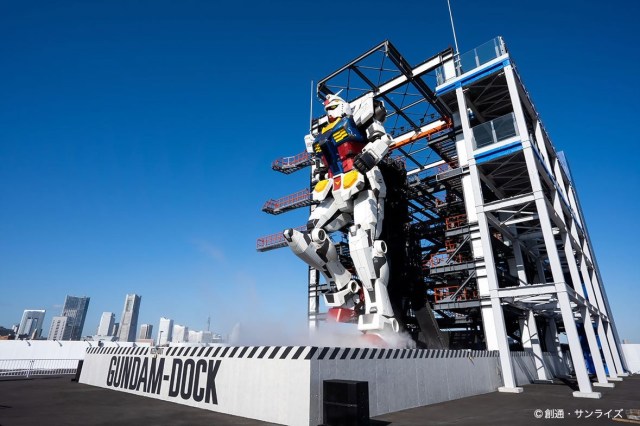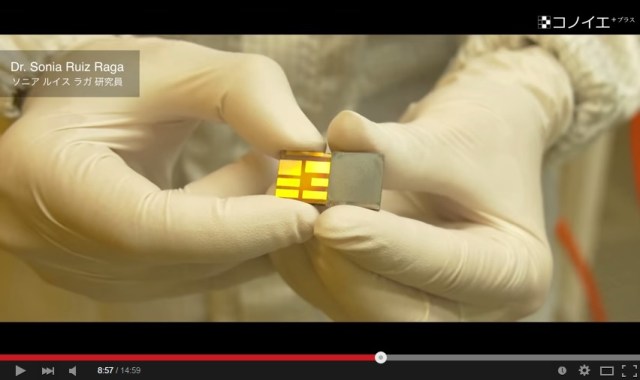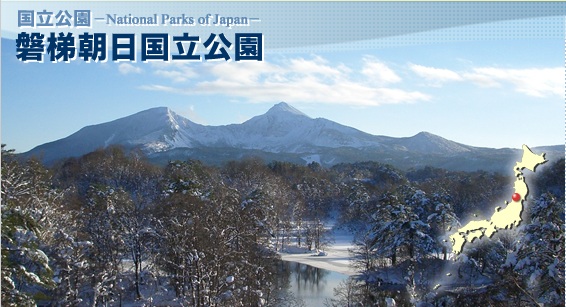renewable energy
Gundam takes a one-day break from fighting Zeon to raise sustainability awareness and save fans some cash.
Back in 2009, a research team from the University of Tokyo led by Professor Tsutomu Miyasaka found that a substance called perovskite had the potential to generate solar power. However, at the time it only had a very weak power conversion efficiency (PCE) of about four percent and would break down in just a few minutes.
Because of these sizable flaws, not could practical use could be made of perovskite and the discovery lay dormant for a few years. Then, after a Korean team managed to double the PCE in 2011, research into the material was reignited. Now as scientists around the world continue to work on it, the PCE has become well above 20 percent and comparable with the standard silicon-based solar panels that we see today.
With perovskite being drastically cheaper to produce, more flexible to use, and now as efficient as regular solar panels, could we be on the verge of a solar energy revolution?
Idemitsu Kosan, INPEX and other energy corporations began speaking with locals on April 3 about building a geothermal power plant inside Bandai-Asahi National Park in Fukushima Prefecture. If locals agree with the plan, research would begin this year with operation commencing in about 10 years. The area is expected to produce 270,000 kilowatts of geothermal energy, higher than anywhere else in Japan.




 Japanese beef bowl chain Sukiya’s 2026 Smile Box lucky bag basically pays for itself
Japanese beef bowl chain Sukiya’s 2026 Smile Box lucky bag basically pays for itself Majority of Japanese mayors say foreign residents are essential but most see good and bad effects
Majority of Japanese mayors say foreign residents are essential but most see good and bad effects Starbucks Japan ready to get Year of the Horse started with adorable drinkware and plushies【Pics】
Starbucks Japan ready to get Year of the Horse started with adorable drinkware and plushies【Pics】 Does this Dormy Inn near Mt. Fuji offer the best business hotel breakfast in all of Japan?
Does this Dormy Inn near Mt. Fuji offer the best business hotel breakfast in all of Japan? Play games, learn, and get your fortune at Ginza’s limited-time Tsunaguu “Shrine of the Future”
Play games, learn, and get your fortune at Ginza’s limited-time Tsunaguu “Shrine of the Future” 7 great places to see Mt. Fuji from without having to climb it
7 great places to see Mt. Fuji from without having to climb it Shinkansen: “Seats can be quickly used as shields in the event of an attack”
Shinkansen: “Seats can be quickly used as shields in the event of an attack” Want to buy a giant, rideable robot? Amazon Japan will sell you one
Want to buy a giant, rideable robot? Amazon Japan will sell you one Married couples in Japan must have the same surname, so does Mr. Sato regret taking his wife’s?
Married couples in Japan must have the same surname, so does Mr. Sato regret taking his wife’s? 7-Eleven’s edible cat paw proves Japanese convenience store sweets are on a whole other level
7-Eleven’s edible cat paw proves Japanese convenience store sweets are on a whole other level Hayao Miyazaki says Happy New Year to Studio Ghibli fans with new art for Year of the Horse
Hayao Miyazaki says Happy New Year to Studio Ghibli fans with new art for Year of the Horse We found possibly the quietest Japanese-style hotel in Tokyo’s bustling Shinjuku district
We found possibly the quietest Japanese-style hotel in Tokyo’s bustling Shinjuku district Cup Noodle tries an authentic Jiro-style ramen, but something’s not quite right
Cup Noodle tries an authentic Jiro-style ramen, but something’s not quite right The best Starbucks Japan Frappuccinos we want to drink again in 2026
The best Starbucks Japan Frappuccinos we want to drink again in 2026 We revisited Sweets Paradise after a decade to see if Japan’s dessert buffet still delivers
We revisited Sweets Paradise after a decade to see if Japan’s dessert buffet still delivers That time Seiji called JASRAC to ask why he didn’t get paid royalties for his song being on TV
That time Seiji called JASRAC to ask why he didn’t get paid royalties for his song being on TV Japan’s oldest largetooth sawfish in captivity back on display in Mie Prefecture
Japan’s oldest largetooth sawfish in captivity back on display in Mie Prefecture Pizza Hut Japan’s hot lucky bags are perfect for a New Year’s pizza party
Pizza Hut Japan’s hot lucky bags are perfect for a New Year’s pizza party 7-Eleven Japan starts new temporary luggage storage service in over 300 branches
7-Eleven Japan starts new temporary luggage storage service in over 300 branches Disillusionment at Tsukiji’s tourist-target prices led us to a great ramen restaurant in Tokyo
Disillusionment at Tsukiji’s tourist-target prices led us to a great ramen restaurant in Tokyo Starbucks teams up with 166-year-old Kyoto doll maker for Year of the Horse decorations【Photos】
Starbucks teams up with 166-year-old Kyoto doll maker for Year of the Horse decorations【Photos】 Tokyo considering law requiring more trash cans following litter increase in heavily touristed area
Tokyo considering law requiring more trash cans following litter increase in heavily touristed area Tokyo’s Tsukiji sushi neighborhood asks tour groups to stay away for the rest of the month
Tokyo’s Tsukiji sushi neighborhood asks tour groups to stay away for the rest of the month Tokyo event lets you travel back in time, for free, to celebrate 100 years since Showa era start
Tokyo event lets you travel back in time, for free, to celebrate 100 years since Showa era start Japan may add Japanese language proficiency, lifestyle classes to permanent foreign resident requirements
Japan may add Japanese language proficiency, lifestyle classes to permanent foreign resident requirements Sanrio theme park in Japan announces plans to expand into a Sanrio resort
Sanrio theme park in Japan announces plans to expand into a Sanrio resort Stamina-destroying “Paralysis Noodles” are Tokyo’s newest over-the-top ramen innovation
Stamina-destroying “Paralysis Noodles” are Tokyo’s newest over-the-top ramen innovation Survey asks foreign tourists what bothered them in Japan, more than half gave same answer
Survey asks foreign tourists what bothered them in Japan, more than half gave same answer Japan’s human washing machines will go on sale to general public, demos to be held in Tokyo
Japan’s human washing machines will go on sale to general public, demos to be held in Tokyo Japan’s deadliest food claims more victims, but why do people keep eating it for New Year’s?
Japan’s deadliest food claims more victims, but why do people keep eating it for New Year’s? We deeply regret going into this tunnel on our walk in the mountains of Japan
We deeply regret going into this tunnel on our walk in the mountains of Japan Studio Ghibli releases Kodama forest spirits from Princess Mononoke to light up your home
Studio Ghibli releases Kodama forest spirits from Princess Mononoke to light up your home Major Japanese hotel chain says reservations via overseas booking sites may not be valid
Major Japanese hotel chain says reservations via overseas booking sites may not be valid Put sesame oil in your coffee? Japanese maker says it’s the best way to start your day【Taste test】
Put sesame oil in your coffee? Japanese maker says it’s the best way to start your day【Taste test】 No more using real katana for tourism activities, Japan’s National Police Agency says
No more using real katana for tourism activities, Japan’s National Police Agency says Starbucks Japan reveals new sakura drinkware collection, inspired by evening cherry blossoms
Starbucks Japan reveals new sakura drinkware collection, inspired by evening cherry blossoms Updated cherry blossom forecast shows extra-long sakura season for Japan this year
Updated cherry blossom forecast shows extra-long sakura season for Japan this year 7 great places to see Mt. Fuji from without having to climb it
7 great places to see Mt. Fuji from without having to climb it Shinkansen: “Seats can be quickly used as shields in the event of an attack”
Shinkansen: “Seats can be quickly used as shields in the event of an attack” Want to buy a giant, rideable robot? Amazon Japan will sell you one
Want to buy a giant, rideable robot? Amazon Japan will sell you one Married couples in Japan must have the same surname, so does Mr. Sato regret taking his wife’s?
Married couples in Japan must have the same surname, so does Mr. Sato regret taking his wife’s? 7-Eleven’s edible cat paw proves Japanese convenience store sweets are on a whole other level
7-Eleven’s edible cat paw proves Japanese convenience store sweets are on a whole other level Which of McDonald’s new “Beef Burgers of the World” is the best? We find out【Taste Test】
Which of McDonald’s new “Beef Burgers of the World” is the best? We find out【Taste Test】 7 reasons why you should visit Aomori Prefecture
7 reasons why you should visit Aomori Prefecture 7-Eleven Japan now sells…matcha burritos?!?
7-Eleven Japan now sells…matcha burritos?!? Nine places where cat lovers in Japan can step up their devotion to worship
Nine places where cat lovers in Japan can step up their devotion to worship Hokkaido park’s “sakura on the ground” are a breathtaking reason to venture beyond Sapporo
Hokkaido park’s “sakura on the ground” are a breathtaking reason to venture beyond Sapporo Japanese restaurant serves noodles that you fold and eat【Taste test】
Japanese restaurant serves noodles that you fold and eat【Taste test】